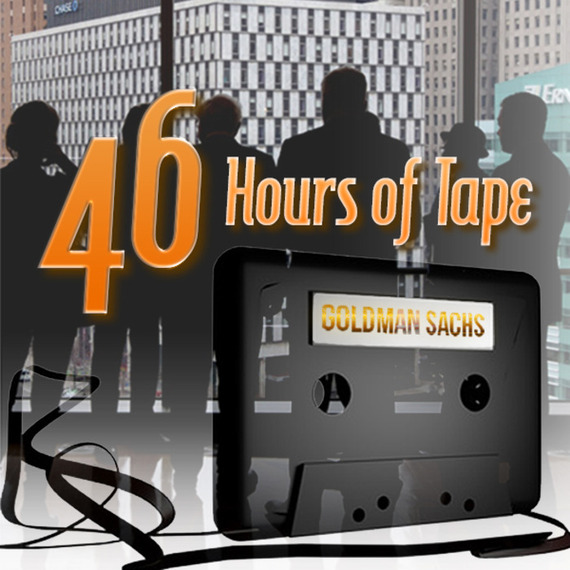By Elin Cherry, Principal and Head of Capital Markets Practice at Compliance Risk Concepts
What will be the regulatory impact of 46 hours of tapes and how can firms prepare to respond?
For those of us in the Compliance and Regulatory world of financial institutions, the story of Carmen Segarra's secret recordings is a great read (click here to listen). However, the reality of the situation is gloomy for regulated financial institutions. The crux of the story is that the Fed was too close to Goldman Sachs to make unbiased decisions and, as a result, it was and is a lax and ineffective regulator. What will be the consequences for financial institutions that are already spending millions on regulatory risk
What About Financial Institutions That Are Not Goldman Sachs?
There are very few financial institutions that carry the political weight and reputation of Goldman Sachs. While everything reported by these recordings may be true for Goldman, experience at several other banks tell a different story. Other experiences show that the Fed was anything but timid in questioning management decisions. Questions have been asked in meetings that were blunt and accusatory.
Demands were made of banks that the banks disagreed with - and the Fed did not back down. It even appeared at times that the Fed was bullying these institutions. Now, however, the Fed is accused of not standing its ground with Goldman Sachs, and unfortunately the fallout from these secretly taped recording will impact not only Goldman and its peers, but all of the financial initiations regulated by the Fed. Those institutions that felt bullied before will be under even more scrutiny and questioning from the Fed and other regulators, even though regulatory spending is at an all-time high. Most financial institutions have invested deeply in compliance and regulatory and the pressure to invest even more will now likely increase.
What Will Be The Impact To Regulators?
Regulators are already under a massive amount of pressure; any time there is a bubble that breaks, one of the first questions asked is, "Where were the regulators?" In addition, regulators are overseen internally and externally. Often, examiners will insinuate in conversations with firms that the examiner knows the requirements they are asking about are not relevant to safety and soundness or any other regulatory requirement. However they need the information to satisfy a supervisor or an auditor. Imagine the world where the most junior examiners are given the power of supervisors and auditors. Picture an examiner with less than four months of experience having a finding that can't be substantiated, but because that examiner strongly believes in the matter, the matter will be given the same weight as if it had been analyzed by a senior officer of the regulator.
The regulators are now going to be concerned that each employee's findings (no matter how inexperienced or uninformed) need to be given equal weighting. Each and every supervisor and officer at regulators are now going to be concerned with secret tapings and whistle blowing at every instance. Visualize the impact on the regulated entity in this environment. Firms that are already investing large amounts of revenue in regulatory and compliance will need to invest even more to satisfy the regulators' fear.
Implement Single Standards Across Firm
Firms should focus on implementing single standards across the firm when possible.
How can firms help themselves counter-point this imbalance? Compliance at many firms is often disorderly and not well coordinated. Compliance is frequently managed division by division, which leads to inconsistencies in policies and procedures and the result is that the Compliance Program can appear broken and confusing, particularly to inexperienced examiners. This coordination will help even the most inexperienced examiner understand the firm, and it will ultimately reduce the cost of compliance, in that a clear-cut program will require fewer resources to maintain.
Allocate Sufficient Resources To Policies and Procedures
Firms should ensure that they have allocated sufficient resources to the creation and maintenance of policies and procedures. Most examinations, reviews and investigations include a thorough review of policies and procedures. Policies and procedures should be in plain English and should not require additional explanation for a reader to comprehend. If a firm finds itself in the position of explaining to a regulator how a certain policy covers a specific risk or how it applies to a business line, then the policy is not clear. Recently policies and procedures have become weaker as the adoption method of policies and procedures has become more and more a committee or consensus process. Firms need to be cautious of this procedure as the substance and required regulatory elements of policies could get removed or diluted during the approval process. Allowing diluted policies throughout the firm without a clear roadmap as to where they apply is an invitation to the regulators to question and investigate the firm further.
Credible Relationships Count
Firms need to continue to develop credible relationships with all examiners, not merely senior members of the examination team. Going forward the regulators will likely be more concerned about "regulatory capture" nevertheless it is important that regulators as well as individual examiners trust that the information that they are provided is transparent and complete.
Segarra Effect Caution
Firms will also need to be cautious of the "Segarra Effect" within their own staff. Firms should be particularly sensitive to staff in Risk positions such as audit, regulatory, compliance and finance as they have sensitive knowledge of firm risk decisions as well as their focus on an ethical culture. All employees need to be given multiple avenues to address concerns that may arise. Employees need to be respected and heard. How management addresses concerns from employees will become even more important going forward. Firms should partner with their Human Resources department to develop training for managers on how to address employee concerns and whistle blowing.
In conclusion, the aftermath of the tapes will mean even deeper regulatory scrutiny and tougher regulators. Firms need to be prepared by better coordinating their Compliance Program throughout the firm, drafting better policies and procedures and continuing to develop credible relationships with regulators.
This article was originally posted on compliance-risk.com.
Elin Cherry is Principal and Head of Capital Markets Practice at Compliance Risk Concepts ("CRC"), a management consulting organization. Previously Elin was Director and Head of Business Unit Compliance, for CIT Group Inc.Prior to CIT Elin was at Societe Generale, where she served as Managing Director, Head of Global Markets Compliance and Deputy Director to the Chief Compliance Officer.Follow Elin @elincherry.

